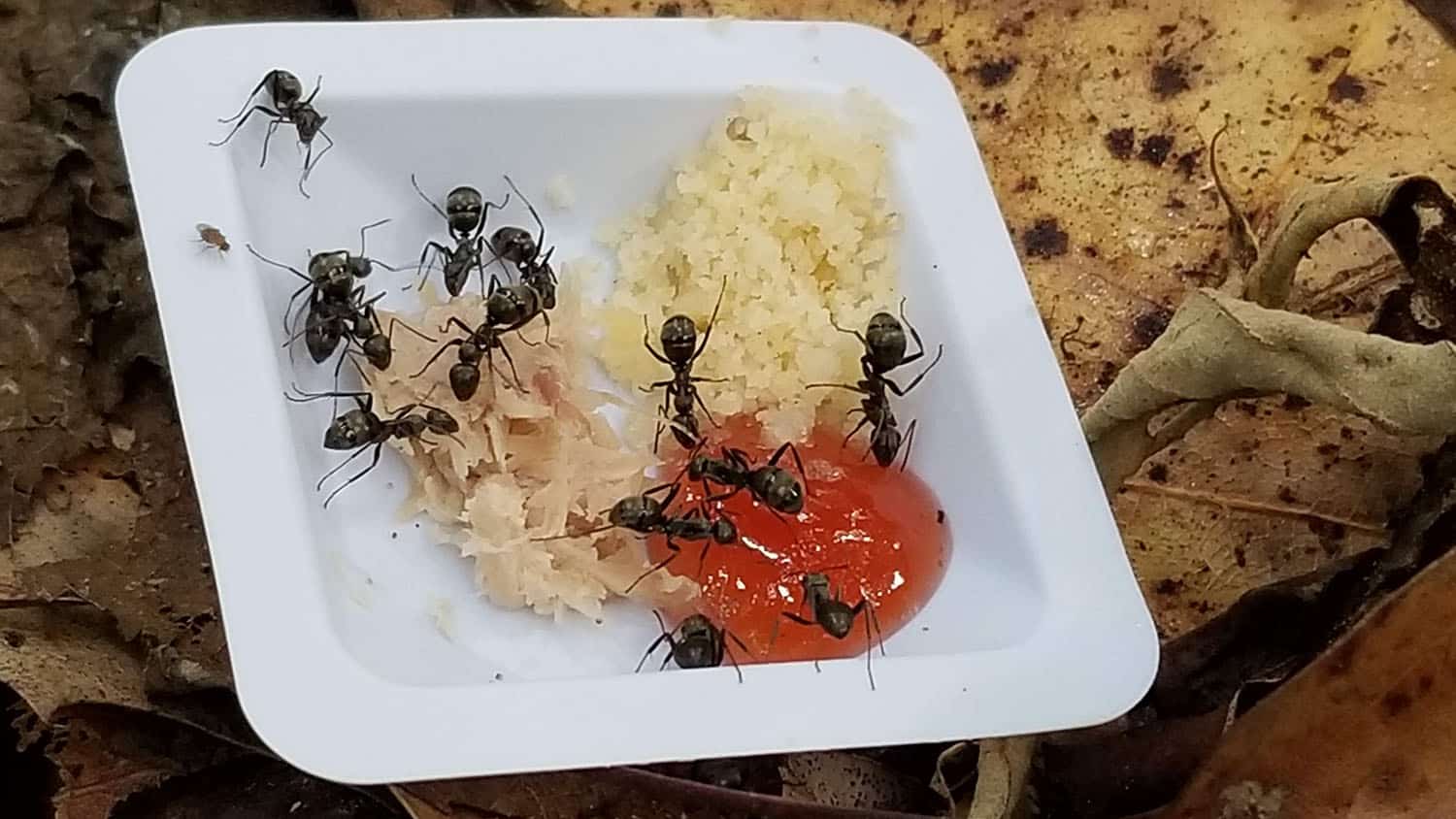Climate Conundrum: Study Finds Ants Aren’t Altering Behavior in Rising Temperatures

Researchers at North Carolina State University found that ants did not adjust their behavior in response to warming temperatures and persisted in sub-optimal microhabitats even when optimal ones were present. The finding suggests ants may not be able to adjust their behavior in response to warming ecosystems.
Ants are ectotherms – animals whose body temperature depends on the environment. While these animals experience a range of temperatures in daily life, most ectotherms prefer habitats that are slightly cooler than the so-called optimal functioning temperature in which an ectothermic animal is able to best perform all of life’s functions. If it encounters an environment warmer than the optimal point, an ectotherm risks approaching the lethal end of its physiology’s spectrum. In other words, if it gets too hot, ectotherms will die.
Little is known, however, about how – or if – insect ectotherms will adjust their behavior to avoid warmer but sublethal temperature ranges – where functioning is physiologically possible but not optimal – which are increasingly likely due to global climate change.
To learn more about how insect species may respond to those warmer, sublethal temperatures, researchers at NC State studied five species of ants common in North Carolina. The researchers counted and collected ants in forest ecosystems and measured air temperatures at the collection sites to identify the distribution of available microhabitats. The researchers also used a unique ant thermometer to measure the temperature of the ants themselves (which varied by ant color and body size). Lastly, to determine each species’ preferred temperature, the researchers collected some ants for the lab and placed them in a rectangular chamber with a controlled temperature gradient.
The researchers found that ants in the lab did have distinct thermal preferences, but ants in the field were active in their preferred climates only slightly more often than expected by chance. Instead, most species were collected in sites that were warmer than preferred, suggesting lack of awareness or some limitation in their ability to adjust to increasing temperatures.
“It’s interesting that the worker ants we observed were willing to put themselves in uncomfortable situations while foraging,” says Sara Prado, an adjunct professor and co-author of the study. “I wonder if the food was ‘profitable’ enough for the ants to stretch their comfort levels, or if they are simply willing to sacrifice their well-being for the sake of the colony.”
“Warmer times and places make warmer ants, and they’re not adjusting their activity to match their preferred conditions,” says Elsa Youngsteadt, a professor of applied ecology at NC State and co-author of the study. “For now, this may be a tradeoff that works out fine for them. But if you think of the huge biomass of ants underfoot, their metabolic rates are all creeping upward as the climate changes. Even if it doesn’t kill them outright, what does that amped-up metabolism mean for their life cycle and even the whole forest ecosystem?”
Youngsteadt plans to further investigate this question with urban ants that are effectively living in the future of climate change in comparatively warm cities.
The paper, “Can behavior and physiology mitigate effects of warming on ectotherms? A test in urban ants,” is published in the Journal of Animal Ecology. The paper was co-authored by Michelle Kirchner from NC State University and Kirsten Keleher from Cornell University. The work was supported by the USDA National Institute of Food and Agriculture, Hatch Project #1018689 to Youngsteadt, and by North Carolina State University.
-jewell-
Note to editors: The study abstract follows.
“Can behavior and physiology mitigate effects of warming on ectotherms? A test in urban ants”
Authors: Elsa, Yougsteadt, Sara Prado, Kirchner, Michelle Kirchner, North Carolina State University: Kirsten Keleher, Cornell University
Published: Jan. 16, Journal of Animal Ecology
DOI: 10.1111/1365-2656.13860
Abstract:
1. Global climate change is expected to have pervasive effects on the diversity and distribution of species, particularly ectotherms whose body temperatures depend on environmental temperatures. However, these impacts remain difficult to predict, in part because ectotherms may adapt or acclimate to novel conditions or may use behavioral thermoregulation to reduce their exposure to stressful microclimates.
2. Here we examine the potential for physiological and behavioral changes to mitigate effects of environmental warming on five species of ants in a temperate forest habitat subject to urban warming.
3. We worked in eight urban and eight non-urban forest sites in North Carolina, USA; sites experienced a 1.1°C range of mean summer air temperatures. At each site, we documented species-specific microclimates (ant operative temperatures, Te) and ant activity on a transect of 14 bait stations at three times of day. In the laboratory, we measured upper thermal tolerance (CTmax) and thermal preference (Tpref) for each focal species. We then asked whether thermal traits shifted at hotter sites, and whether ants avoided non-preferred microclimates in the field.
4. CTmax and Tpref did not increase at warmer sites, indicating that these populations did not adapt or acclimate to urban warming. Consistent with behavioral thermoregulation, four of the five species were less likely to occupy baits where Te departed from Tpref. Apparent thermoregulation resulted from fixed diel activity patterns that helped ants avoid the most inappropriate temperatures but did not compensate for daily or spatial temperature variation: Hotter sites had hotter ants.
5. This study uses a novel approach to detect behavioral thermoregulation and sublethal warming in foraging insects. The results suggest that adaptation and behavior may not protect common temperate forest ants from a warming climate, and highlight the need to evaluate effects of chronic, sublethal warming on small ectotherms.